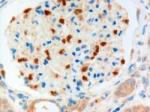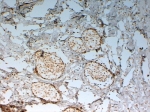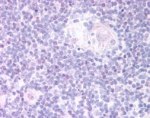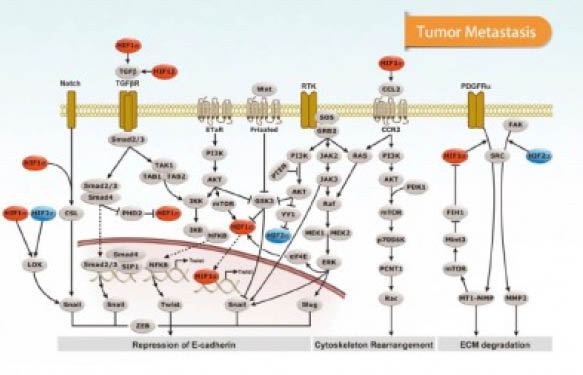FOX transcription factor family members regulate the expression of genes known to play a critical role in embryonic development and organ morphogenesis. These “helix-turn-helix” class of proteins display a common “forkhead” motif and are encoded by Forkhead genes. Recent lines of evidences suggest that FOX proteins are promising therapeutical targets and biomarkers in various areas. A good opportunity to review of the most reliable FOX primary antibodies for research applications!

FOX transcription factors are a “hot” topic in multiple research domains such as developmental biology, morphogenesis, oncology, metabolism disorders, and stem cells. Accessing specialized sources of validated FOX antibodies will help you towards getting reliable experimental data and progressing in your research programs.
Here’s a selection of the best anti-FOX antibodies specific for the 7 known FOX transcription factors (FOXC1, FOXC2, FOXF1, FOXG1, FOXL2, FOXN1, and FOXP3 respectively).
#1- An eye on FOXC1
The “forkhead box C1″ or FOXC1 protein is active in the early formation of the eye (iris, lens, cornea) and its protection against oxidative stress. FOXC1 is also involved in the heart, kidneys, and brain development.
Mutations in the FOXC1 gene cause eye abnormalities (Axenfeld-Rieger syndrome, Peters anomaly, glaucoma) and congenital brain malformation (Dandy-Walker Syndrome).
GeneTex’s FOXC1 goat polyclonal antibody is ideal when analysing FOXC1 protein expression by ELISA, IHC, IHC-P, and WB. This anti-FOXC1 has a specific species reactivity for Human, Mouse and… Zebrafish!
#2 FOXC2 and Mesenchymal morphogenesis


The “forkhead box C2″ or Mesenchyme ForkHead 1 (MFH-1) or FOXC2 participate in the formation of organs and tissues before birth (such as lymphatic vessels and veins, lungs, eyes, kidneys, urinary and cardiovascular systems).
Mutations in the FOXC2 gene can cause lymphatic obstruction, eye irritation (lymphedema-distichiasis syndrome). FOXC2 is present in highly metastatic cancers.
Regarding research antibodies, several alternatives are possible for ELISA, WB and IHC applications. For example, a goat polyclonal IgG antibody allowing the human FOXC2 expression levels analysis is available from GeneTex. For those fond of monoclonals, they might prefer Abnova’s anti FOXC2 (clone 2H3). 2H3 allows the detection of Human FOXC2 in mulitple immuno-assays including IF.
#3- FOXF1 and pulmonary vein development
The “forkhead box F1″ or FOXF1 is important in the embryonic development of pulmonary mesenchyme, which gives rise to the pulmonary vasculature necessary for the lungs’ respiratory functions, and of the gastro-intestinal tract.
Patients with FOXF1 gene mutations have alveolar capillary dysplasia with misalignment of pulmonary veins. They usually also display gastro-intestinal abnormalities.

There are only a few research antibodies validated for FOXF1 detection available. Nevertheless, 2 antibodies deserve special attention when choosing FOX1 antibodies.
- The new GeneTex rabbit polyclonal detects Human, Mouse, Rat, and Zebrafish FOXF1 by IHC and WB. This antibody is generated against a synthetic peptide directed towards the middle region of mouse FOXF1.
- Abnova’s FOXF1 mouse polyclonal MaxPab® is generated from a verified full-length FOXF1 sequence which is expressed in a mammalian transfected lysate. B01P recognizes both linear and conformational FOXF1 protein epitopes for maximum antibody performance in ELISA pair study, control for siRNA knock-down and conventional WB, IF, IHC, IP, FC analysis.
#4- FOXG1 and brain development
The “forkhead box G1 protein” or FOXG1 is involved in brain development. In humans, FOXG1 gene mutations cause severe brain disorders with impaired development and structural brain abnormalities (FOXG1 syndrome, epilepsy, severe speech impairment…).
Recently, StemCulture has develop a FOXG1 specific affinity purified rabbit polyclonal antibody raised against a peptide mapping at the C-terminus of FOXG1 of mouse origin. This FOXG1 research antibody is compatible with ELISA, WB, IHC on frozen sections and IC on fixed cells (both mouse and human).
#5- FOXL2: from eyelid to ovarian development
The “forkhead box L2″ or FOXL2 protein is active in the development (proliferation and apotosis) of eyelid cells, endocrine and gonad tissues (like ovarian granulosa cells and the brain pituitary gland). FOXL2 is also involved in the metabolism of fats, steroid hormones, and reactive oxygen species in the ovaries.
Congenital FOXL2 gene mutations prevent the normal development of muscles in the eyelids, resulting in eyelid malformations (eyelids cannot open fully) and vision limitation (BPES syndrome). FOXL2 mutations might also cause primary ovarian insufficiency and infertility. Somatic mutations are also seen in adult ovarian granulosa cell tumors.
The Rabbit polyclonal Phospho-Ser263 FOXL2 antibody from Assay Biotech detects endogenous levels of FOXL2 only when phosphorylated at serine263 by WB and ELISA. Apart from phosphoralytion studies, the GeneTex goat anti-FOXL2 C-term goat polyclonal IgG allows you to detect Human FOXL2 by ELISA and WB.
#6- FOXN1- from skin, hair and nails to T-cell development

The “forkhead box N1 protrein” or FOXN1 supports skin, hair, and nail development. It plays also a critical role in the immune system and T-cell formation by guiding the formation of the thymus during normal embryonic development. FOXN1 is also suspected to be involved in the central nervous system development.
T-cell immunodeficiency (such as the DiGeorge syndrome) but also congenital alopecia, and nail dystrophy in early life can be related to the FOXN1 gene mutation. Recently, enforced FOXN1 expression has been shown to be sufficient to reprogram mouse fibroblasts into functional Thymocyte Epithelial Cells (TECs) in regenerative research. (Bredenkamp N. et al. (2014) Nature)
To precisely analyse FOXN1 protein expression patterns, Abnova have developed a goat polyclonal antibody raised against a synthetic peptide of the human FOXN1. Compatible with ELISA, this anti FOXN1 is ideal for IHC experiments of FFPE sections.
#7- FOXP3 and autoimmunity
By regulating genes involved in the immune system, the “forkhead box P3” or FOXP3 is crucial for the production and normal function of regulatory T cells which prevent naturally autoimmune disorders.
FOXP3 gene mutations reduce numbers or induce a complete absence of regulatory T cells and cause immune dysregulation leading to autoimmune disorders (ex. X-linked (IPEX) syndrome involving intestines, skin, endocrine systems, metabolism disorders like diabetes…).

The FOXP3 mouse monoclonal antibody (clone 3G3 – IgG1, kappa) is raised against full length recombinant FOXP3. 3G3, and is ideal for Flow Cytometry analysis and WB.
If you’re looking at Chromatin Immunoprecipitation, I would rather recommend the GeneTex “ChIP grade” FOXP3 polyclonal antibody. In addition to ChIP assay and WB, this goat polyclonal will help you in performing ELISA, ICC/IF, IHC, IHC-P specific for Human FOXP3 protein detection.
What about your FOX studies?
11 high quality antibodies have been presented here. The objective is to help you select the most appropriate reagent for your FOX-specific immuno-asssays. So… which one has your preference?
Are you looking for a particular clone or a application to analyse FOX sub-class ? Are you interested in other “best of” related to other Transcription factor family or other proteins?
Feel free to leave your comments below!



